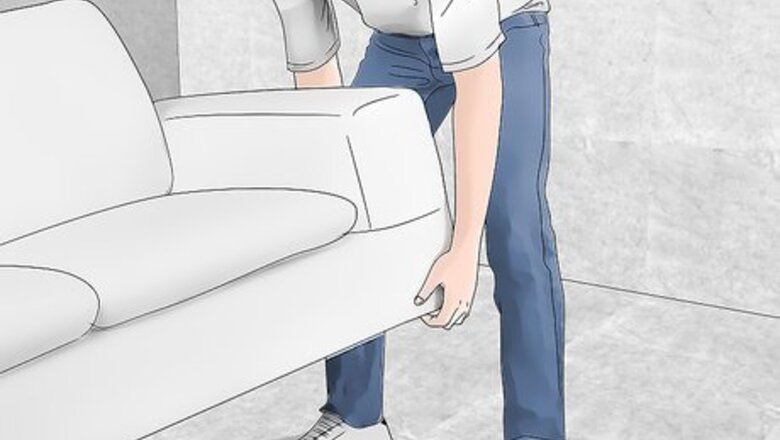
views
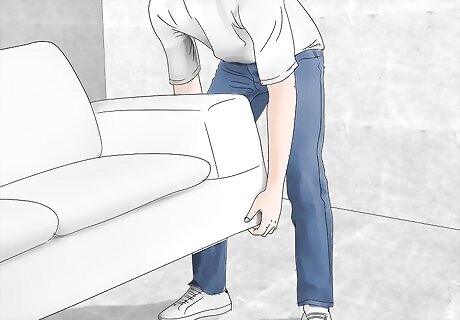
Remove all furniture, fixtures, and outlet covers from the room. The more you can get out of the way, the easier it will be to do the knockdown texture on the walls or ceiling. Move out all of the furniture that you can, even if you’re only texturing the walls—the spray will get on items even in the center of the room. If there is furniture in the room that you can't move, cover it completely with plastic sheeting that's secured in place with painter's tape. Turn off the power to the correct circuit at the breaker box, confirm that it’s off with a voltage detector, and exercise caution when removing light fixtures. If you’re not confident in your abilities, contact an electrician.
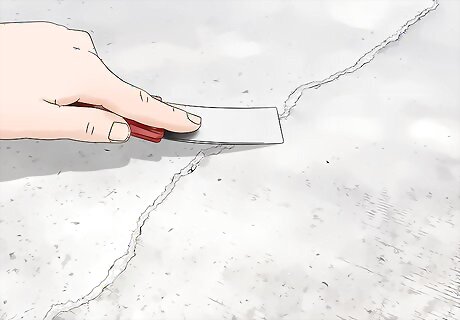
Clean, patch, and/or paint the walls or ceiling as needed. You can do a knockdown texture on new or old walls and ceilings, but the preparation process will vary based on your needs. Keep the following in mind: If the wall or ceiling is new, unpainted plaster or drywall, make sure the surface is as smooth as possible. If there are dents, nail holes, or other blemishes in an older wall or ceiling, patch them with spackle, sand them smooth, and prime them before proceeding. Clean older walls or ceilings with an appropriate cleanser based on the paint finish, then let them dry fully before applying a knockdown texture. Although people typically paint or repaint the wall/ceiling after applying the knockdown texture, you can also paint it an off-white color beforehand. That way, the white, unpainted texture will provide a subtle color contrast.
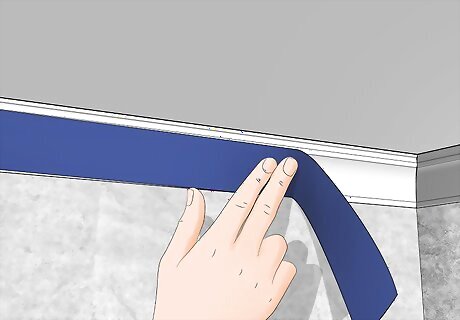
Cover or tape over everything in the room that you don’t want textured. Cover the floor completely with drop cloths, and use plastic sheeting and painter’s tape to cover any trim, windows, or other areas that aren’t being textured. After you’ve removed the cover plates from the electrical outlets and switches, place tape over the opening in the wall or ceiling. If you’re texturing the ceiling, use tape and thin plastic sheeting to cover all of the walls. If you’re texturing the walls, do the same with the ceiling. Don’t try to take a shortcut here! Taking the time to properly cover everything you don’t want to texture will save you far more time in the long run.
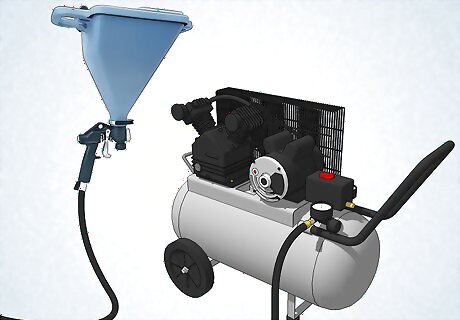
Assemble the spray gun according to the product instructions. Go to a home improvement store and rent or buy a drywall spray gun kit, including a hopper, 8-12 mm nozzle, air hose, and 30-40 psi air compressor. Rely on the instructions that come with the gun for assembly guidance, and ask for a demo when you rent or buy the spray gun. Generally speaking, you’ll do the following: Attach the hopper (where you’ll add the joint compound) to the top of the spray gun. Connect the air hose to the spray gun and the air compressor. Attach the spray nozzle to the tip of the spray gun.
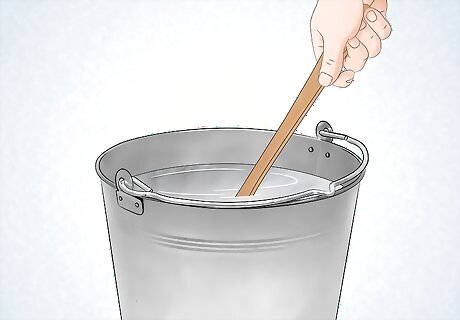
Mix the joint compound and water until you get a pancake batter consistency. Add 2 in (5.1 cm) of water to a 2 US gal (7.6 L) bucket, then pour in an entire 1.5 US gal (5.7 L) bucket of joint compound dry mix. Lock a paddle attachment onto a power drill and use it to stir the mixture until there are no lumps. Wait 15 minutes, then test the consistency of the mix. If it’s thicker than pancake batter, mix in about 0.5 in (1.3 cm) of water at a time until the consistency is right. If you’re not sure what pancake batter consistency is, grab a small drywall knife and scoop up some of the mix. Tilt the knife blade slightly—if the mix slides right off, it’s thin enough. If you're texturing an area larger than about 150 sq ft (14 m), which is the area of the ceiling in an average room, break up the room into sections and mix up individual batches for each section. For instance, do half the ceiling in the morning, and the other half in the afternoon. You can find all of these supplies at a home improvement store.
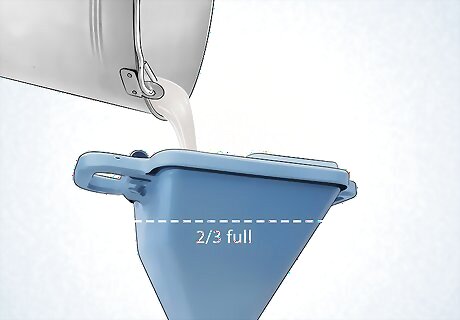
Fill the hopper partway and set up a spray testing area. Scoop or pour the mixed joint compound into the spray gun’s attached hopper until it’s one-half to two-thirds full. Set up a roughly 3 ft × 3 ft (91 cm × 91 cm) piece of scrap drywall or plywood, or just practice on some of the plastic sheeting that you’ve taped up in the room. Turn on the air compressor, and hold the spray gun 18 in (46 cm) from the testing surface. Read the product instructions to ensure that you know how to turn on, use, and turn off the air compressor properly. Before spraying, put on eye protection to keep overspray out of your eyes. It’s also a good idea to wear a hat and long sleeves. Wear a dust mask if you’re concerned about possibly breathing in overspray particles.
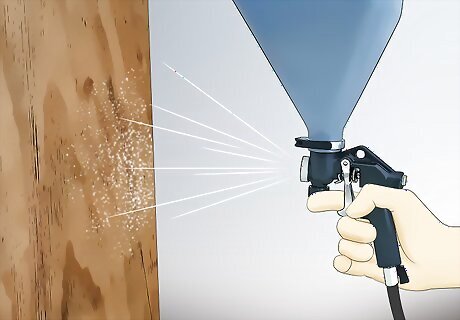
Practice your spraying technique on the test surface. Following the spray gun’s instructions, squeeze the trigger to release a loose spray of joint compound. Keep the spray gun about 18 in (46 cm) from the test surface, and wave the gun back and forth in a smooth, steady motion to ensure even coverage over the surface. Keep practicing until you’ve got the “feel” for spraying the right amount of the mixture. The nozzle on the spray gun is adjustable. You can make adjustments to increase or decrease the amount of spray. Your goal is to get “40/60” coverage. In other words, 40% of the area you spray should be covered in small, random globules of the joint compound. The other 60% of the area should still be bare. Search online for "knockdown texture spray images" for visual examples.
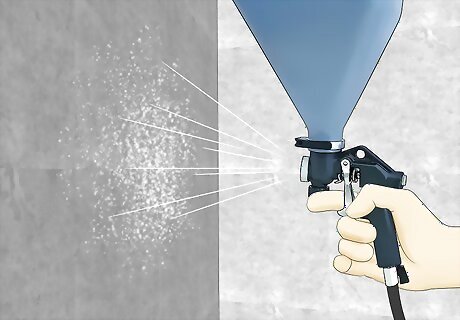
Spray the texture on the wall or ceiling in 3 ft × 3 ft (91 cm × 91 cm) sections. If you’re texturing the ceiling, for instance, you don’t have to literally draw a grid on it. However, imagine that it’s broken up into squares, and spray them one-by-one using the technique you mastered during your practice session. Work to the edges of each section as you spray, but try not to overlap the sections as you work. Otherwise, the texture will build up too much at the overlaps. If you spray while waving the gun in a smooth, steady, back-and-forth motion, it’s fairly easy to coat a 3 ft × 3 ft (91 cm × 91 cm) section evenly. It may take a little longer your first time trying a knockdown texture, but you’ll be able to cover an average ceiling in only 5-10 minutes with a bit of practice. Don’t spray for more than 10-15 minutes before switching to using the knockdown blade. If necessary, do only one half of the ceiling or one wall at a time.
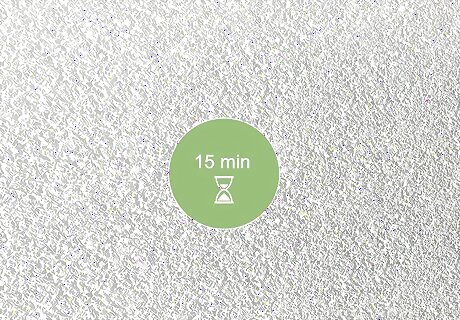
Wait 10-15 minutes, or until the sprayed texture dries only slightly. Don’t go straight from spraying on the texture to smoothing down its peaks with the knockdown knife. Instead, watch and wait for the wet shine on the sprayed texture to dissipate. As soon as this happens, grab your knockdown knife to finish the job. If the sprayed texture is still too wet, it will smear instead of flatten when you use the knockdown knife. If let it dry for too long, however, you won’t be able to properly flatten it out with the knockdown knife.
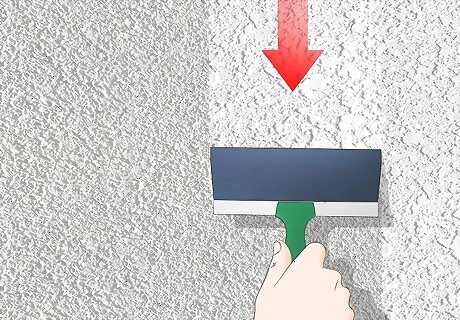
Run the knockdown knife over the texture in a straight line, using light pressure. Use a knockdown knife with an 18 in (46 cm) rubber blade for this job. Attach an extension pole to the handle if you need it to extend your reach, then lay the rubber blade flat at one end or corner of the surface area you just textured. Apply gentle, even pressure, and drag the knife in a completely straight line across the surface, stopping about 2 ft (61 cm) away from the other end or corner. If you’re texturing a wall, start at the top corner of the wall where it meets the ceiling, drag the knockdown knife straight down until it’s about 2 ft (61 cm) from the floor, then lift it away. Light, even pressure will flatten out the peaks of the globules of texture on the wall, but it won’t smear them into each other. If you’re worried about your technique here, practice on a scrap piece of drywall or plywood first. You can find a knockdown knife at a home improvement store, likely near the joint compound mixes. It looks like a large squeegee.
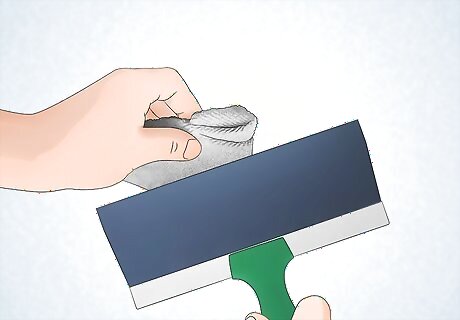
Wipe off the knockdown knife blade after every stroke. Dampen a rag in some clean water and run it over the rubber blade of the knockdown knife to wipe away the excess joint compound that you scraped off the textured area. Do this every time you pull the blade from the wall or ceiling, so that the knockdown knife is clean for each pass over the textured area. Keep a stack of damp rags handy so you can wipe off the blade quickly and easily.
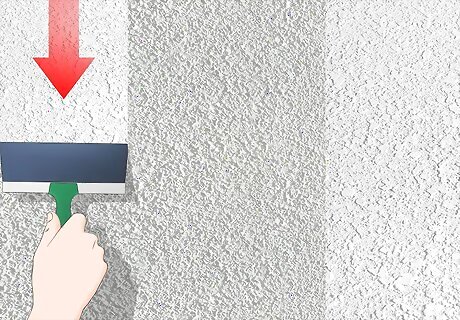
Work in from the opposite edge to complete your first row of knockdown. With your first stroke, you started at one end and “knocked-down” a straight line until you were 2 ft (61 cm) from the other end of the textured area. Now, start at that other end and finish knocking down that remaining 2 ft (61 cm). Ease off the pressure on the blade as you meet your previous endpoint, so that these two passes of the knockdown knife blend seamlessly.
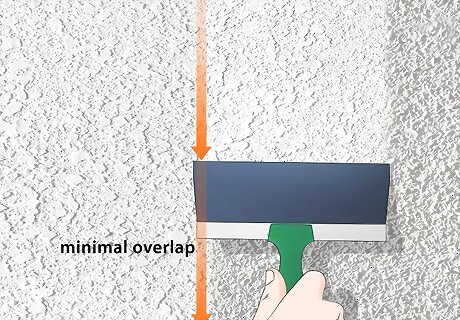
Continue to smooth the texture in straight rows with minimal overlap. Set your knockdown knife in position right next to your original starting point, with 3 in (7.6 cm) or less of overlap. Drag it across the textured area in a parallel straight line, using the same technique as before. Repeat this process row-by-row until you’ve knocked down the entire textured area. Work at a brisk pace. You’ll have about 10-15 minutes until the texture dries too much to be easily smoothed over. Keep your smoothing lines as straight as possible. Go straight over any taped-over openings for electrical outlets, fixtures, or switches. Create curved lines around permanent obstacles only when absolutely necessary.
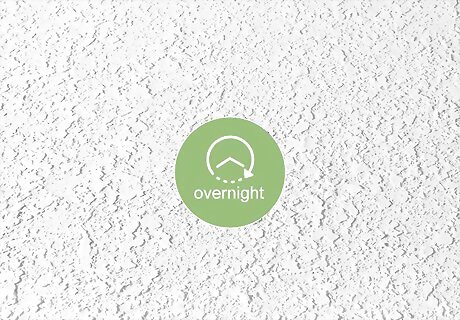
Let the texture dry overnight before cleaning up the room. The knockdown texture may be dried and set in only a few hours, but it’s best to give it at least 8 hours. After that, you can remove all the plastic sheeting, painter’s tape, and drop cloths in the room, and put all the electric fixtures and cover plates back in place. Wait at least 3 days, and ideally a week, before placing any furniture right against a wall you just textured, or hanging anything (like a mirror or framed artwork) on it. Likewise, wait 3 days to a week before painting the textured surface, if you intend to paint it.











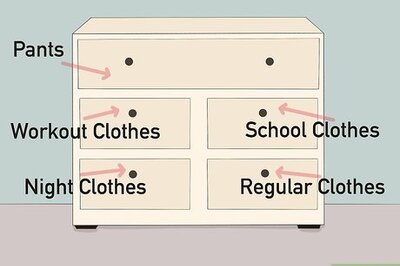





Comments
0 comment